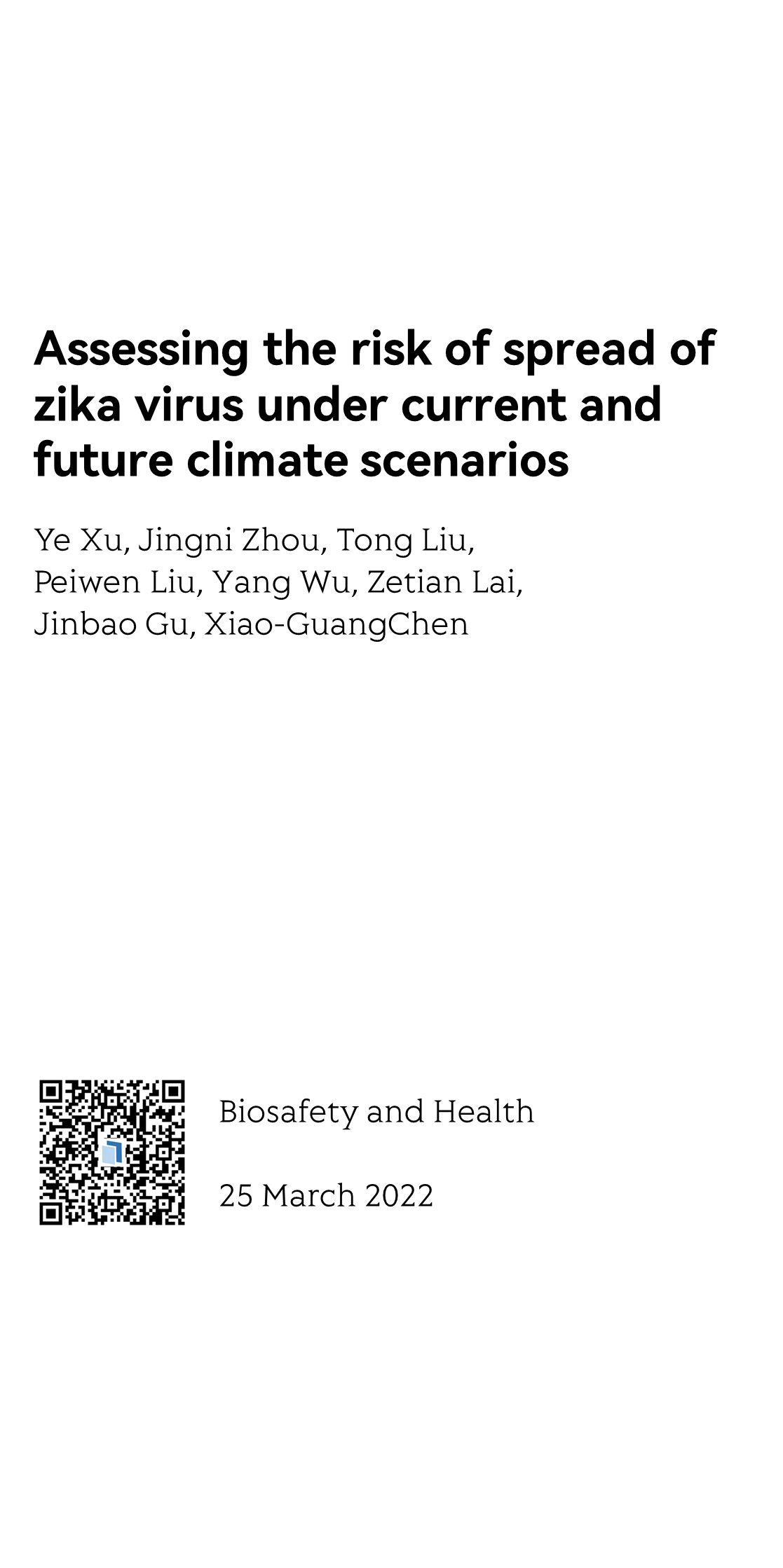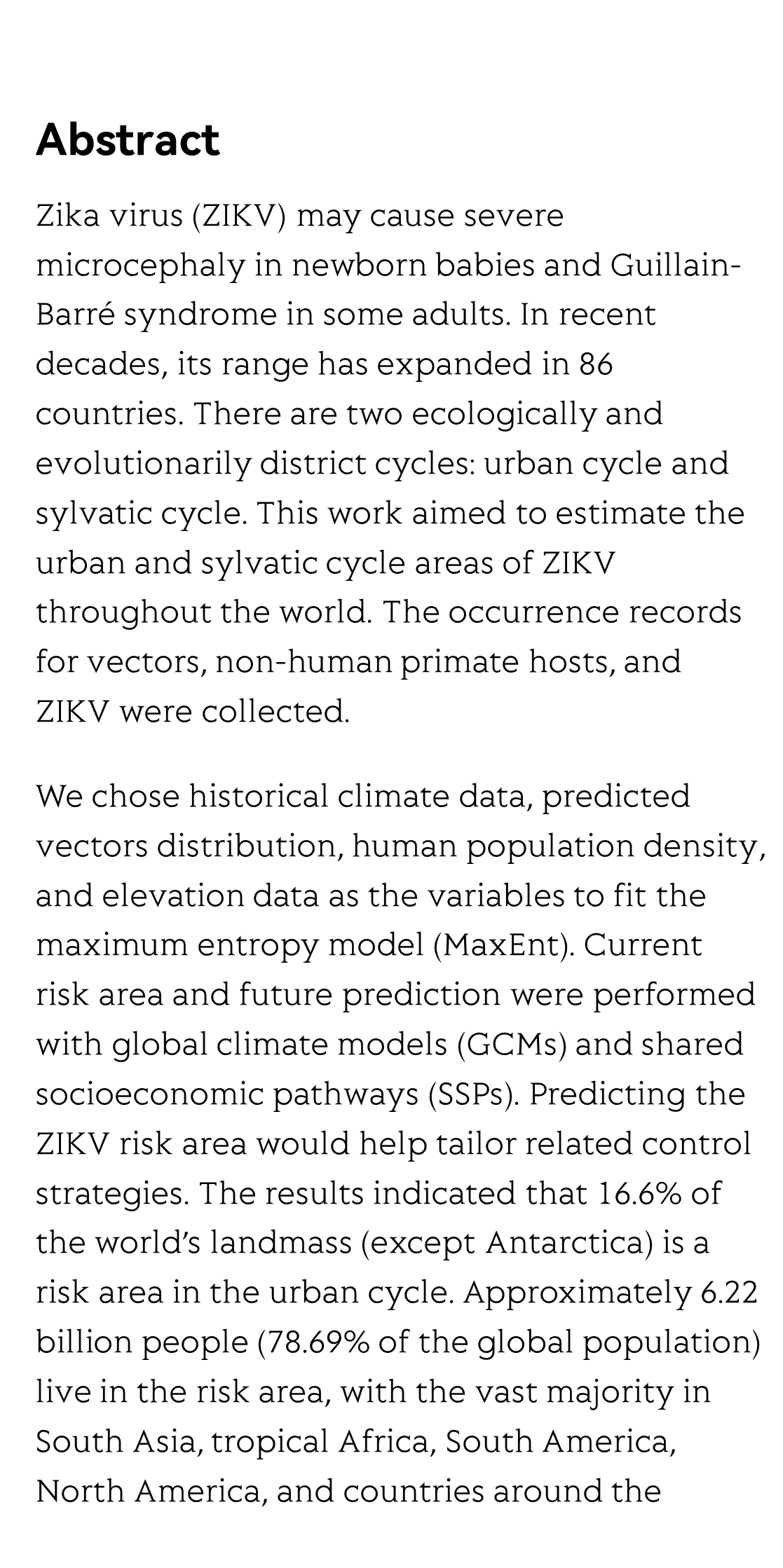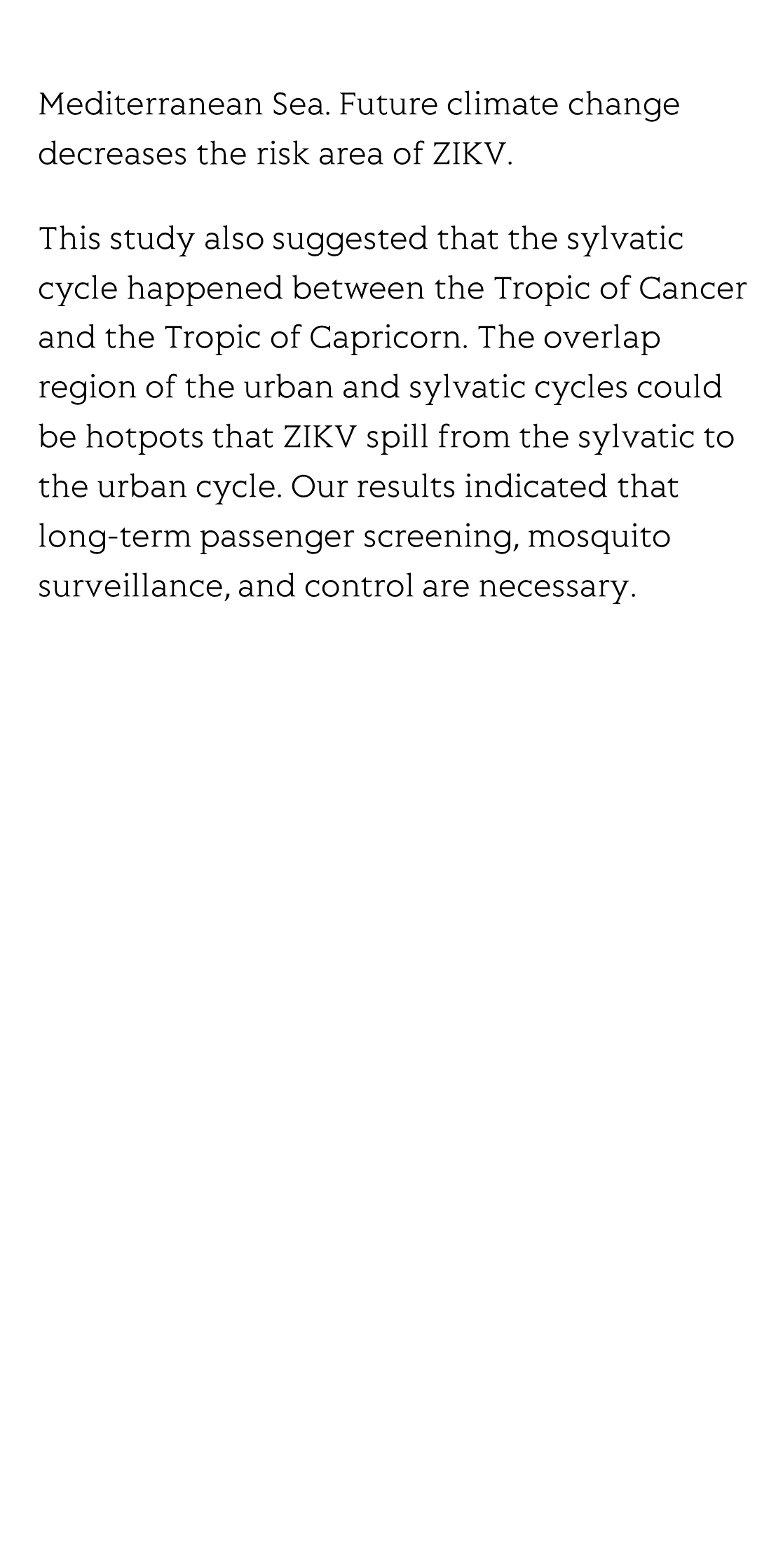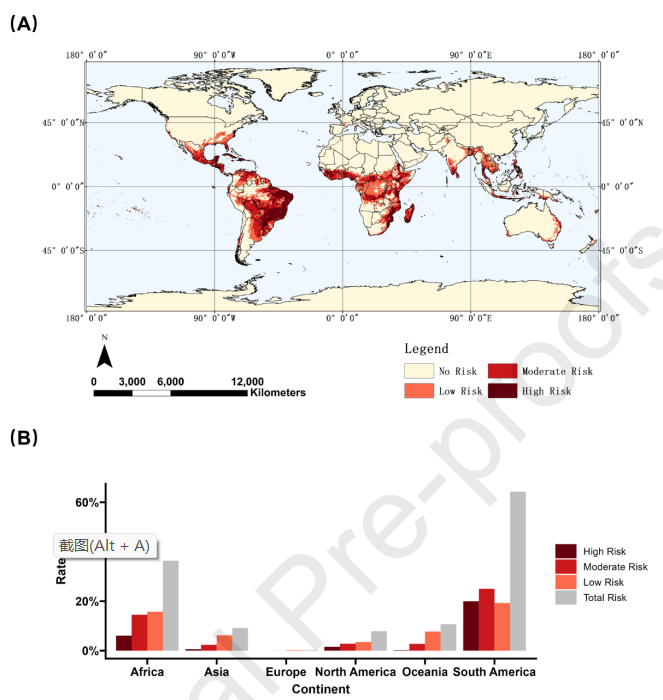(Peer-Reviewed) Assessing the risk of spread of zika virus under current and future climate scenarios
Ye Xu ¹ ², Jingni Zhou ¹ ², Tong Liu 刘通 ¹ ², Peiwen Liu 刘培文 ¹ ², Yang Wu 吴恙 ¹ ², Zetian Lai 赖泽钿 ¹ ², Jinbao Gu 顾金保 ¹ ², Xiaoguang Chen 陈晓光 ¹ ²
¹ Department of Pathogen Biology, Key Laboratory of Tropical Disease Research of Guangdong Province, School of Public Health, Southern Medical University, Guangzhou 510515, China
中国 广州 南方医科大学公共卫生学院 病原生物学系 广东省热带病研究重点实验室
² Institute of Tropical Medicine, School of Public Health, Southern Medical University, Guangzhou 510515, China
中国 广州 南方医科大学公共卫生学院热带医学研究所
Abstract
Zika virus (ZIKV) may cause severe microcephaly in newborn babies and Guillain-Barré syndrome in some adults. In recent decades, its range has expanded in 86 countries. There are two ecologically and evolutionarily district cycles: urban cycle and sylvatic cycle. This work aimed to estimate the urban and sylvatic cycle areas of ZIKV throughout the world. The occurrence records for vectors, non-human primate hosts, and ZIKV were collected.
We chose historical climate data, predicted vectors distribution, human population density, and elevation data as the variables to fit the maximum entropy model (MaxEnt). Current risk area and future prediction were performed with global climate models (GCMs) and shared socioeconomic pathways (SSPs). Predicting the ZIKV risk area would help tailor related control strategies. The results indicated that 16.6% of the world’s landmass (except Antarctica) is a risk area in the urban cycle. Approximately 6.22 billion people (78.69% of the global population) live in the risk area, with the vast majority in South Asia, tropical Africa, South America, North America, and countries around the Mediterranean Sea. Future climate change decreases the risk area of ZIKV.
This study also suggested that the sylvatic cycle happened between the Tropic of Cancer and the Tropic of Capricorn. The overlap region of the urban and sylvatic cycles could be hotpots that ZIKV spill from the sylvatic to the urban cycle. Our results indicated that long-term passenger screening, mosquito surveillance, and control are necessary.
Flicker minimization in power-saving displays enabled by measurement of difference in flexoelectric coefficients and displacement-current in positive dielectric anisotropy liquid crystals
Junho Jung, HaYoung Jung, GyuRi Choi, HanByeol Park, Sun-Mi Park, Ki-Sun Kwon, Heui-Seok Jin, Dong-Jin Lee, Hoon Jeong, JeongKi Park, Byeong Koo Kim, Seung Hee Lee, MinSu Kim
Opto-Electronic Advances
2025-09-25
Dual-frequency angular-multiplexed fringe projection profilometry with deep learning: breaking hardware limits for ultra-high-speed 3D imaging
Wenwu Chen, Yifan Liu, Shijie Feng, Wei Yin, Jiaming Qian, Yixuan Li, Hang Zhang, Maciej Trusiak, Malgorzata Kujawinska, Qian Chen, Chao Zuo
Opto-Electronic Advances
2025-09-25







